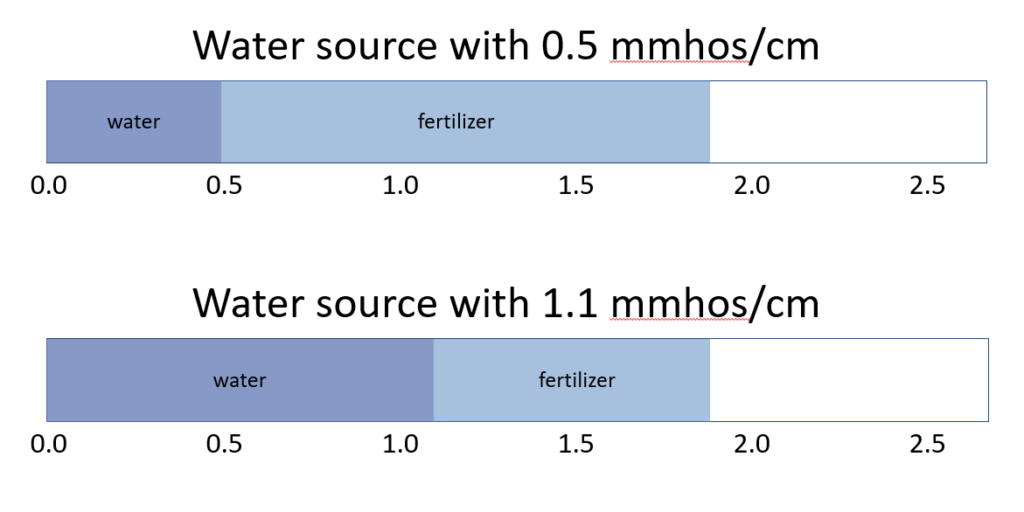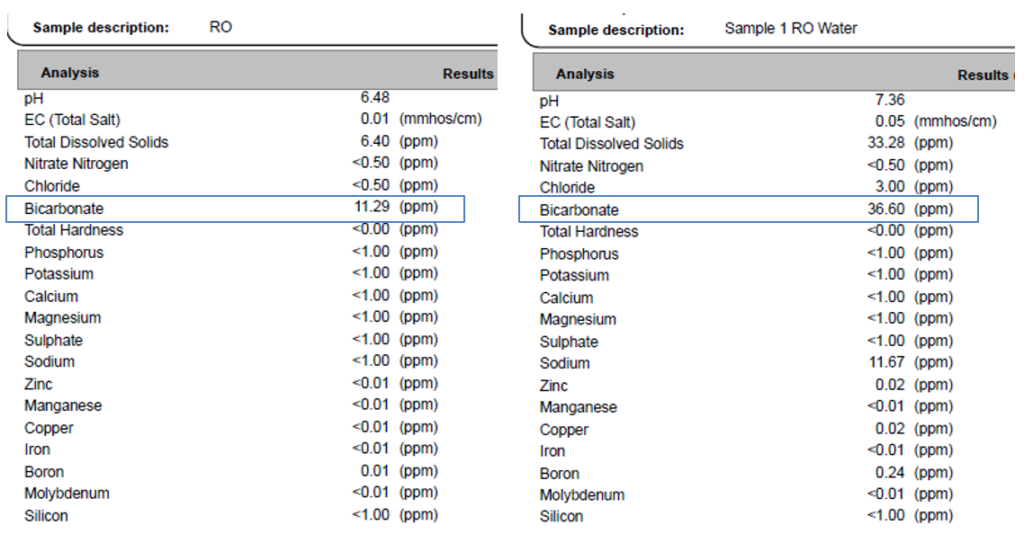What’s in Your Water? Understanding EC Water Analysis for Optimal Plant Health
The Hidden Factor in Your Water: Electrical Conductivity (EC)
The quality of irrigation water is often an overlooked factor in plant nutrition. While most growers focus on fertilizers, growing media conditions, and light, the electrical conductivity (EC) of irrigation water plays a crucial role in determining the success of your nutrient program.
EC is the ability of a liquid to conduct an electrical current, measured in mmhos/cm or mS/cm. Most elements (plant essential or other) that are soluble in water will contribute to the conductivity of water or a nutrient solution. As a result, the EC can be a measuring tool for determining how much dissolved salts are initially present in you irrigation water. This number influences how much fertilizer can be added without overwhelming plants. Understanding EC can help optimize nutrient feeding, improve plant health, and prevent issues like salt stress and nutrient lockout.
Why EC Matters for Your Fertilization Strategy
If you’re not factoring in your water’s EC levels, you may be overfeeding your plants without realizing it. Here’s why:
1. High EC = Less Room for Fertilizer
When water already has a high starting EC (0.5-1.0+ mmhos/cm), it contains a significant amount of dissolved salts before fertilizer is even added. This reduces the available space for nutrients from fertilizers, potentially leading to salt buildup, nutrient imbalances, and root damage.
2. Low EC = More Fertilizer Flexibility
If your water has a low starting EC (<0.5 mmhos/cm), it provides more room for the addition of nutrients. You can customize nutrient solutions more effectively, ensuring your plants get the right balance of essential minerals without exceeding safe levels.

Ideal EC Levels for Irrigation Water:
- Below 0.5 mmhos/cm (mS) is considered optimal for most crops.
- Higher than this? You may need to adjust your fertilizer concentrations to avoid excessive salts. See our post on Reading Your Rates for how to measure EC and determine fertilizer rates.
Not All Reverse Osmosis (RO) Systems Are Equal
Reverse osmosis (RO) systems are commonly used to reduce initial EC and improve water quality, but not all systems perform equally. Recent water test results have highlighted key differences between two RO systems:
- One system left behind 11.29 ppm bicarbonates, while another retained 36.60 ppm bicarbonates plus 11.67 ppm sodium.
- These leftover minerals can still influence EC and impact plant health.

This demonstrates why simply installing an RO system isn’t enough—you need to regularly test the water it produces to ensure it’s actually improving quality.
How to Test and Manage EC in Your Water
Test Your Water Regularly – Don’t assume your water source is consistent. Depending on your irrigation water source, EC levels can fluctuate due to seasonal changes, water treatment adjustments, or well water variability.
Compare Municipal vs. RO Water – Just because water is filtered doesn’t mean it’s free of problematic elements. Always compare test results to ensure your system is working effectively.
Adjust Fertilizer Plans Accordingly – If EC is high, consider using low salt index fertilizers, like Plant-Prod, or reducing application rates to prevent salt stress.
Monitor Plant Health – Signs of salt stress include leaf burn, stunted growth, and poor nutrient uptake. If plants show these symptoms, check your EC levels and adjust accordingly.
For more information on how to measure and manage irrigation water EC, see Purdue Extension’s Details of Electrical Conductivity Measurements in Greenhouse Production.
The Bottom Line
Your water isn’t just H₂O—it’s a crucial component of your growing strategy. By regularly testing and understanding EC levels, you can:
- Optimize fertilizer application
- Prevent salt-related plant stress
- Improve overall crop health and yield
Next in Our Series: Stay tuned for Part 2, where we’ll dive into Alkalinity Water Analysis and why it matters for your crops.
